Research in Physics and Astronomy
- Home
- Departmental Directory
- Liberal Arts
- Department of Physics and Astronomy
- Research in Physics and Astronomy
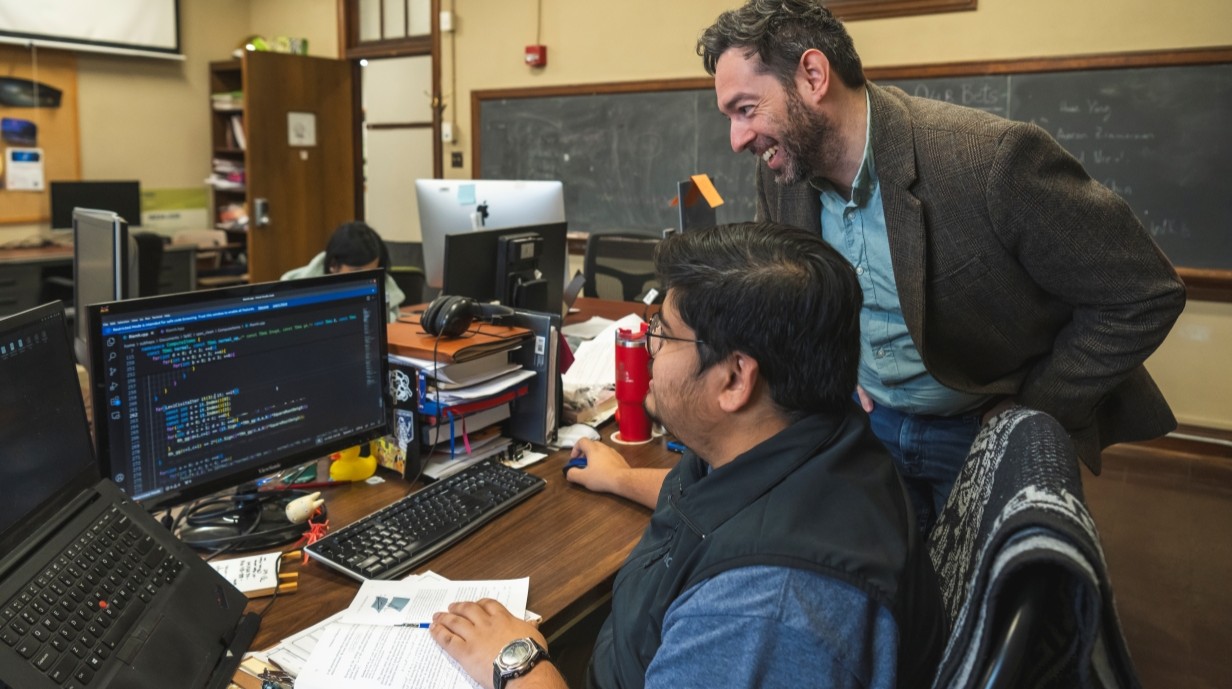
World-Class Research in Physics and Astronomy
The Department of Physics and Astronomy at the University of Mississippi has four main subfields of research among other strengths such as computational physics.
Research Subfields
Condensed Matter Physics
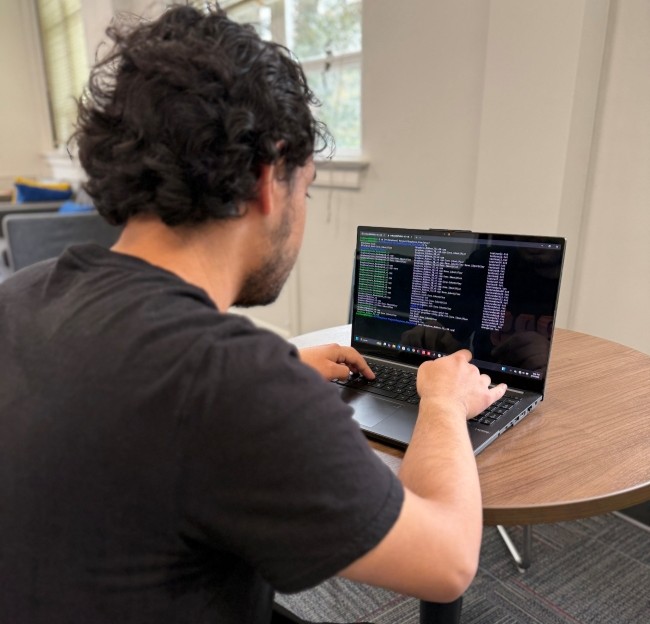
Numerical Quantum Many-body Physics
Systems of strongly interacting electrons can support ground states that have no analog in classical physics, characterized by quantum entanglement, hidden topological order, order-from-disorder, and other exotic scenarios. Exploring such states in a precise way is typically beyond the reach of traditional theoretical tools, and we have to resort to brute-force simulation. But quantum systems are exponentially more complex than our classical computers. Dr. Kevin Beach, Associate Professor and Chair of Physics and Astronomy, and students in Condensed Matter theory work on developing and implementing clever simulation algorithms that can nonetheless tame some of those most difficult quantum problems.
Condensed Matter Physics Faculty
Kevin Beach
- Chair and Associate Professor of Physics and Astronomy
Igor Ostrovskii
- Professor of Physics & Astronomy
High Energy Physics
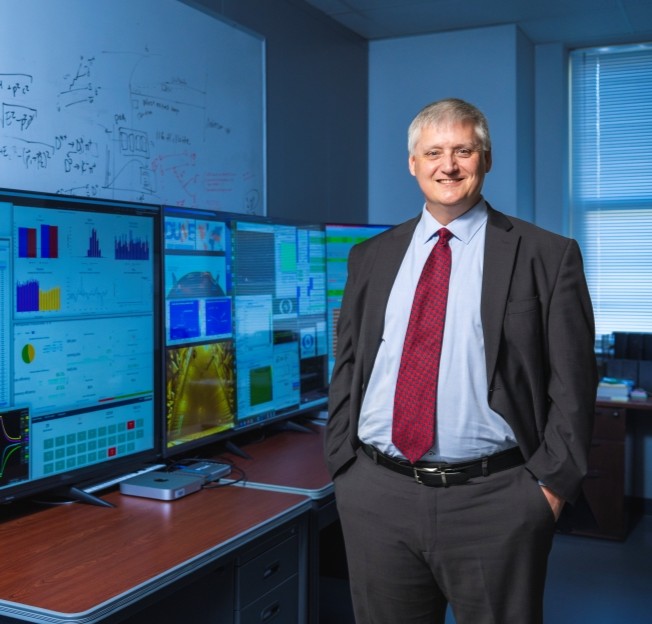
National High Energy Physics Advisory Panel
Dr. Breese Quinn, Professor of Physics and Astronomy and Director of the Multimessenger Astrophysics Center, has been a leader in the field of high energy physics for decades. He was selected to serve on the High Energy Physics Advisory Panel for the U.S. Department of Energy/National Science Foundation. Read More.
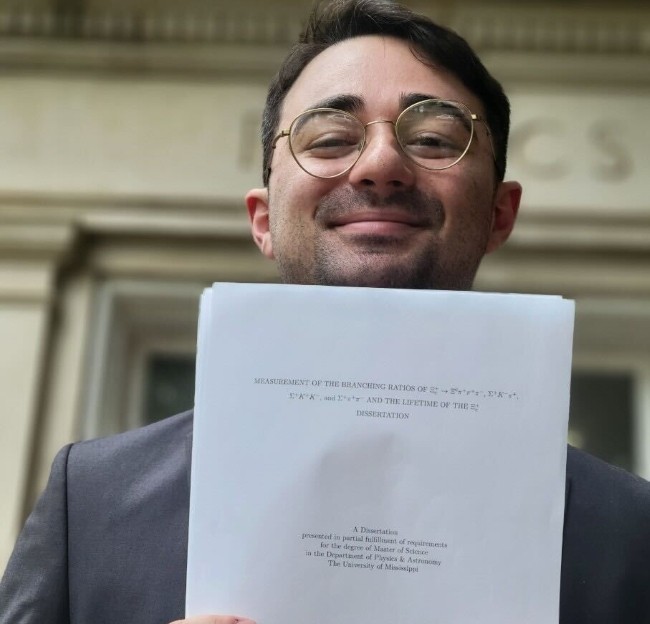
Graduate Research on Belle II
"With a fraction of the current Belle II dataset, world-leading measurements of charmed hadrons (hadrons with a charm quark) lifetimes have already been reported for various D mesons and the Lambda_c+, which was measured by our own Dr. Jake Bennett. Precise charmed lifetime measurements provide a test of the Heavy Quark Expansion (HQE), which is used to predict decay-widths of processes beyond the Standard Model. My main research area is performing such measurements on charmed baryons, particularly the Xi_c^+, which is the subject of my M.S thesis and will soon enter collaboration review for publication."
Paul Gebeline (M.S. in Physics '24)
Ph.D. student


Neutrino Research
US Department of Energy's Fermi National Accelerator Lab excavated of three caverns in South Dakota for the Deep Underground Neutrino Experiment (DUNE), the world's largest neutrino detection facility. Dr. Gavin Davies, Assistant Professor of Physics and Astronomy, has worked for 13+ years on the NOvA project to better understand the mysterious "ghost particle," which is approximately 1,000 times smaller than an electron. He is Mississippi's Principal Investigator for DUNE.
High Energy Faculty and Research Scientists
The UM High Energy Physics research group is dedicated to the study of the most fundamental physics phenomena.
Jake Bennett
- Associate Professor of Physics and Astronomy
Alakabha Datta
- Professor of Physics and Astronomy
Gavin Davies
- Associate Professor of Physics and Astronomy and Graduate Program Coordinator
Gene Quinn
- Profess of Physics and Astronomy and Director of the Center for Multimessenger Astrophysics
Gene Quinn
- Profess of Physics and Astronomy and Director of the Center for Multimessenger Astrophysics
Jeffrey Kleykamp
- Postdoctoral Research Associate
David Sanders
- Computational Physicist and Research Scientist
Gravity and Astrophysics
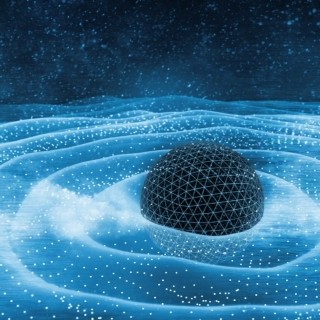

Laser Interferometer Gravitational-Wave Observatory (LIGO)
Dr. Anuradha Gupta, an Assistant Professor of Physics and Astronomy, is a member of the LIGO Scientific Collaboration and LISA Consortium. She works towards the detection and parameter estimation of gravitational wave signals coming mostly from binary systems composed of neutron stars and black holes.
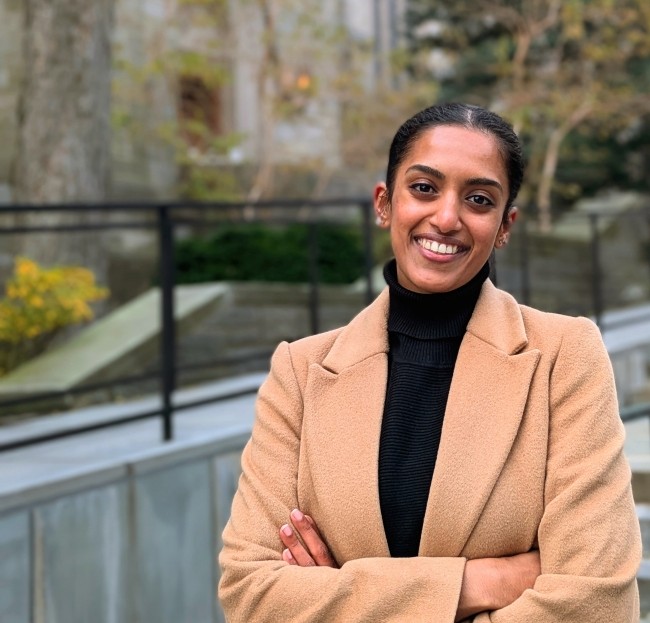
Purnima Narayan, Doctoral Student
"My research focuses on testing General Relativity (GR) using gravitational waves from binary black hole mergers. Current tests rely on comparing observed signals with theoretical models, but missing physics in these models can mimic deviations from GR, leading to false alarms. I investigate how missing astrophysical effects affect our ability to accurately test GR. By simulating these effects and analyzing their impact on parameter estimation, my work helps refine our methods for identifying true deviations from Einstein’s theory. This ensures that future claims of GR violation are based on genuine signals rather than modeling limitations."

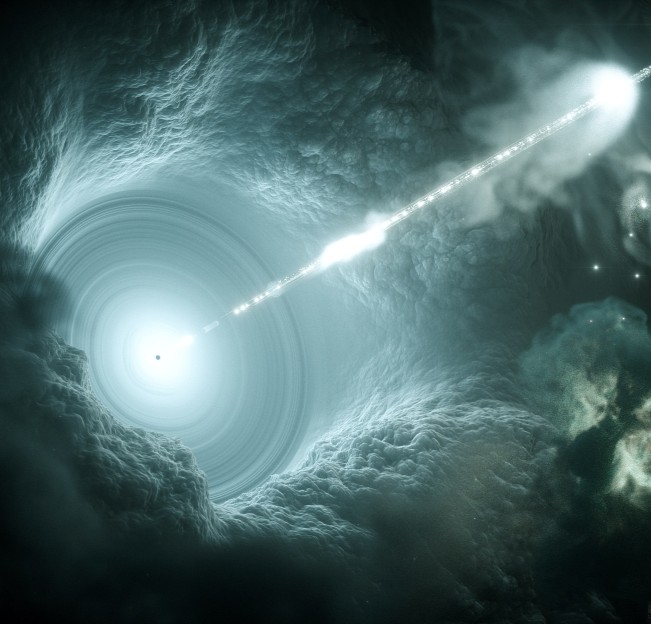
Undergraduate Research on Blazars
"I am a part of the Ole Miss Blazar Group. My research project is inverse Compton scattering calculations of Blazar gamma-ray flaring using the 'Ring of Fire' Model. My primary activity is running computer codes with the data that is sent to me about the specific blazar."
Elizabeth Goreth
(B.S. in Physics, minors in Astronomy and Mathematics)
Alfred P. Sloan Research Fellow
Dr. Leo Stein, Associate Professor of Physics and Astronomy, was selected as an emerging leader in STEM innovation as a 2023 Alfred P. Sloan Research Fellow. A renowned researcher of astronomy and black holes, Stein has coauthored articles in the peer-reviewed journal Physical Review Letters and received a Faculty Early Career Development Program Award from the National Science Foundation.
Leo Chaim Stein
Associate Professor of Physics and Astronomy
Gravity and Astrophysics Faculty and Research Scientists
UM faculty are at the forefront of modern research in experimental and theoretical gravity, astrophysics and cosmology.
Luca Bombelli
- Professor of Physics and Astronomy
James Bonifacio
- Assistant Professor of Physics and Astronomy
Anuradha Gupta
- Assistant Professor of Physics & Astronomy
Nicholas MacDonald
- Assistant Professor of Physics and Astronomy
Leo Stein
- Associate Professor of Physics and Astronomy
Physical Acoustics
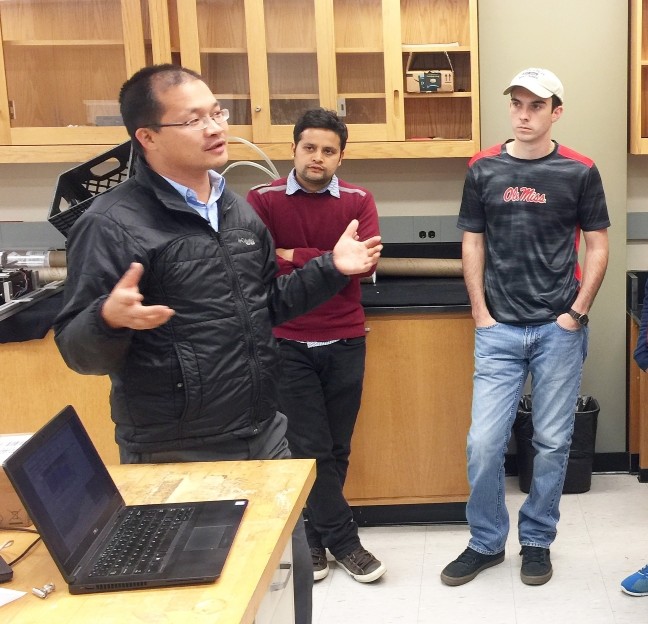
R. Bruce Lindsay Award from the Acoustical Society of America
Dr. Likun Zhang, (left in photo) Associate Professor of Physics and Astronomy, received an award for his substantial contribution to the advancement of his field of study.
His research interests are centered on physical fluid dynamics and acoustics, focusing on how physical phenomena interact with the environment and how these interactions can be harnessed for practical applications in oceans, climate, space, and biotechnologies. From detecting leaks in undersea oil pipelines to blasting an acoustical tweezers experiment into space (below), Dr. Zhang has made significant strides in the field of physical acoustics.
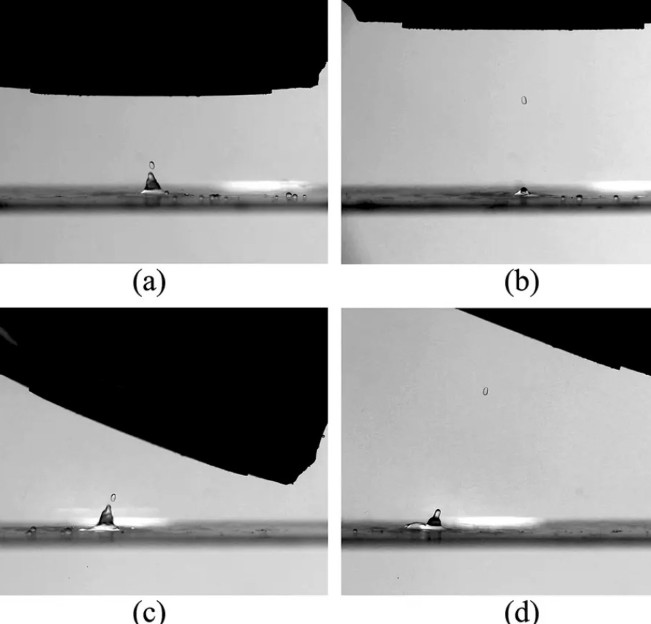
Acoustical Tweezers
Dr. Joel Mobley, Professor of Physics and Astronomy; Dr. Robert Lirette, Visiting Assistant Professor of Physics and Astronomy; and Dr. Likun Zhang, Associate Professor of Physics and Astronomy, sonically captured a droplet of liquid and moved it without any direct or mechanical contact, using only acoustic waves. They used a technique called near-field acoustic tweezers, which uses sound as an invisible force field. The work has useful applications in biology and chemistry lab and in biotechnology.

Biomedical Acoustics Research
Mammalian brain tissue is composed of different types of tissue such as the gray and white matter, various anatomical structures such as the thalamus and cerebellum and cavities known as ventricles. Dr. Cecille Labuda, Associate Professor of Physics and Astronomy, and her students studied the ultrasonic properties of sheep brain at different locations was studied. Properties measured were the speed of ultrasound and the absorption. The image shows the spatial variation of the frequency slope of attenuation, a measure of the absorption of ultrasound at 10 MHz. The gray and white matter are clearly differentiated as well as the thalamus (heart shaped structure in the center of the image).
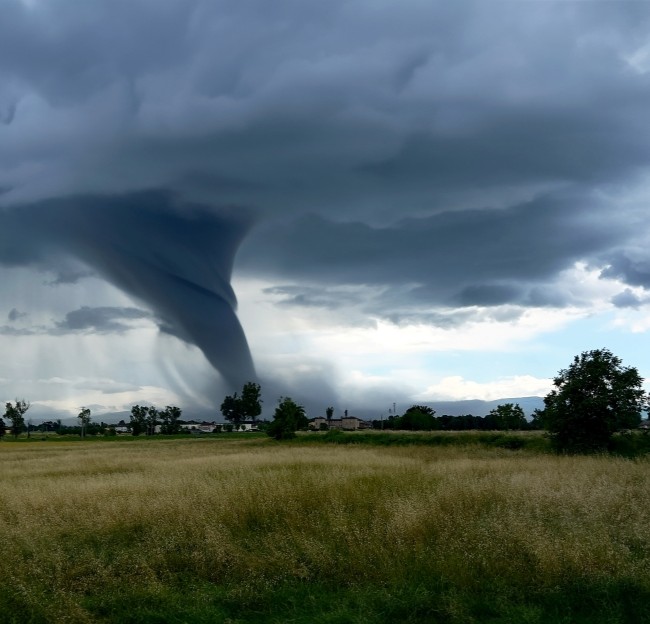
Tornado Early Warning
A $2M grant from the National Oceanic and Atmospheric Administration has enabled scientists led by Dr. Robert Waxler, Research Associate Professor of Physics and Astronomy, to begin a new phase of a tornado tracking project. Using acoustic sensors, the researchers will detect the characteristic sound that tornadoes emit, allowing them to verify tornados in real-time and project its path.
"I envision seeing a map on an app with a dot that shows a tornado to half a football field in area," said Waxler.
Graduate and Undergraduate Research in Physical Acoustics
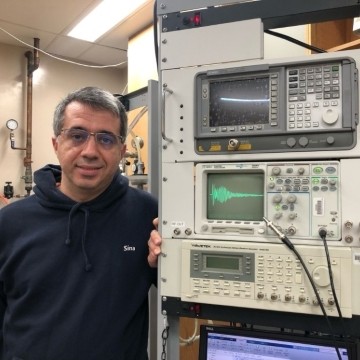
Acoustic Manipulation Techniques
Doctoral student Sina Rostami's research focuses on tunable acoustic lenses for ultrasonic beamforming, trapping, and particle manipulation for biomedical, industrial, and materials science application. By leveraging near-field radiation forces and structured acoustic fields, he creates controllable trapping zones and complex wave interactions. His work integrates computational modeling, including the Angular Spectrum Method (ASM), with experimental validation using transducers and custom apertures.
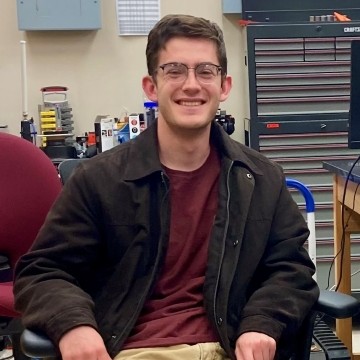
Undergraduate Research
Daniel Stewart is an undergraduate researcher with the Applied Acoustics Group at the National Center for Physical Acoustics (NCPA). Some of his previous efforts have been radio communication for rover systems and construction of a 3D acoustic sensor array. Currently, he is working alongside another undergraduate student on taking acoustic measurements in the anechoic chamber at the NCPA. This current effort greatly involves utilizing signal processing techniques in order to understand the effects of various aspects of the experimental system on the acoustic signal of interest.
Physical Acoustics Faculty and Research Scientists
One of the largest in the US, the Physical Acoustics research group program is housed in the Jamie Whitten National Center for Physical Acoustics (NCPA).
Cecille Labuda
- Associate Professor of Physics & Astronomy
Joel Mobley
- Professor of Physics and Astronomy and Undergraduate Program Coordinator: Senior Scientist I at the National Center for Physical Acoustics
Likun Zhang
- Associate Professor of Physics and Astronomy; Senior Scientist I at the National Center for Physical Acoustics
Zhiqu Lu
- Senior Research Scientist II and Research Associate Professor of Physics
Roger Waxler
- Principal Scientist and Research Associate Professor of Physics & Astronomy
Campus Research Resources
The Department of Physics and Astronomy has access to the extensive research and computing facilities of the University of Mississippi. Books, bound journals, and current periodicals pertaining to physics are housed in the J.D. Williams Library, which is located near Lewis Hall. Researchers on campus have easy access to facilities of the Mississippi Center for Supercomputing Research and the National Center for Physical Acoustics.
Mississippi Center for Supercomputing Research
The Mississippi Center for Supercomputing Research (MCSR), based at the University of Mississippi, provides high-performance computing (HPC) resources and expertise to researchers and educators across the state. Our mission is to support advanced research and academic projects that require computational power beyond the scope of desktop systems.
- 102 Powers Hall
- 8 a.m. - 5 p.m.
- assist@mcsr.olemiss.edu
National Center for Physical Acoustics
The Jamie Whitten National Center for Physical Acoustics (NCPA) at the University of Mississippi stands as a pioneer of innovation in the field of physical acoustics. Since its establishment by Congress in 1987, NCPA has led the way in exploring a vast array of applications, from infrasound to ultrasound and beyond, setting benchmarks in research excellence.
- 145 Hill Drive
- 8 a.m. - 5 p.m.
- (662) 915-5889
- ncpa@olemiss.edu
